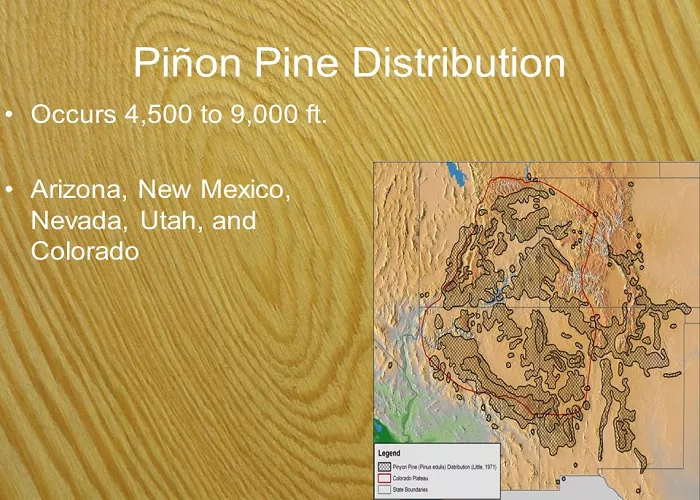Piñon nuts, harvested from the piñon pine (Pinus edulis), are a cherished delicacy in New Mexico. These small, flavorful nuts have been integral to the region’s culture and cuisine for centuries. However, with changing climates and environmental factors, the availability of piñon nuts has fluctuated in recent years. This guide provides insights into where and how to responsibly harvest piñon nuts in New Mexico, ensuring a sustainable and rewarding experience.
Understanding Piñon Pines and Their Habitats
Piñon pines are small, drought-tolerant trees native to the southwestern United States, particularly thriving in New Mexico’s varied elevations. They typically grow between 5,000 and 7,500 feet in elevation, favoring well-drained soils and sunny slopes. These trees produce cones that mature in late summer to early fall, yielding the coveted piñon nuts.
Optimal Regions for Piñon Nut Harvesting in New Mexico
New Mexico’s diverse landscapes offer several prime locations for piñon nut harvesting. The following regions are renowned for their abundant piñon pine populations:
1. Northern New Mexico: Santa Fe and Taos Areas
The foothills surrounding Santa Fe and Taos are rich in piñon pine forests. Areas such as the Santa Fe National Forest and the Carson National Forest provide ample opportunities for foraging. These forests are accessible and offer a variety of terrains suitable for harvesting.
Harvesting Tips:
- Timing: Late August to early October is typically the peak season for piñon nut maturity.
- Access: Many areas are accessible via well-marked trails. Always check local regulations regarding foraging permissions.
2. Central New Mexico: Albuquerque and Surrounding Foothills
The Sandia and Manzano Mountains east of Albuquerque are home to extensive piñon pine stands. The Cibola National Forest, encompassing these mountains, offers designated areas for foraging.
Harvesting Tips:
- Elevation: Piñon pines are typically found between 6,000 and 8,000 feet in elevation in this region.
- Preparation: Be prepared for variable weather conditions, especially as elevations increase.
3. Western New Mexico: Near Gallup and the Navajo Nation
The areas surrounding Gallup, including parts of the Navajo Nation, are rich in piñon pine forests. The Zuni Mountains and the El Malpais National Monument are notable for their piñon stands.
Harvesting Tips:
- Respect Boundaries: Ensure you have the necessary permits when foraging on tribal lands.
- Terrain: Be mindful of rugged terrains and plan your routes accordingly.
4. Southern New Mexico: Sacramento Mountains
The Sacramento Mountains near Cloudcroft and the Lincoln National Forest are known for their piñon pine populations. These areas offer less crowded foraging opportunities amidst scenic landscapes.
Harvesting Tips:
- Season: Mid to late September is ideal for piñon nut collection in this region.
- Facilities: The Lincoln National Forest provides campgrounds and picnic areas for visitors.
Sustainable Harvesting Practices
To ensure the longevity of piñon pine populations and the sustainability of nut harvesting, consider the following practices:
- Harvesting Limits: Adhere to local guidelines regarding the quantity of nuts that can be harvested per person.
- Tree Health: Focus on collecting nuts from trees that are abundant and healthy, avoiding overharvesting from single trees.
- Leave No Trace: Ensure that your foraging activities do not damage the environment. Pack out all waste and minimize disturbances to wildlife.
Legal Considerations and Permissions
Before embarking on your foraging journey, it’s crucial to understand and comply with local regulations:
- Public Lands: Foraging is often permitted in national forests and Bureau of Land Management (BLM) lands, but specific areas may have restrictions. Always check with local ranger districts for current guidelines.
- Private and Tribal Lands: Obtain explicit permission from landowners or tribal authorities before foraging. Unauthorized harvesting is both illegal and disrespectful.
Tools and Techniques for Harvesting
Equipping yourself with the right tools and knowledge will enhance your foraging experience:
- Tools: A sturdy walking stick can aid in retrieving cones from lower branches. A small rake or comb can help in collecting fallen cones.
- Identification: Familiarize yourself with the appearance of piñon pine cones and needles to distinguish them from other species.
- Safety: Wear appropriate footwear and attire. Be cautious of wildlife and always carry a first-aid kit.
Processing and Enjoying Piñon Nuts
Once you’ve harvested your piñon nuts, proper processing will ensure the best flavor and usability:
- Extraction: Remove the nuts from their shells using a nutcracker or by gently tapping them with a hammer.
- Storage: Store shelled nuts in airtight containers in a cool, dry place. They can also be frozen to extend freshness.
- Culinary Uses: Piñon nuts are versatile and can be used in baking, cooking, or enjoyed as a snack.
Conclusion
Harvesting piñon nuts in New Mexico is a rewarding endeavor that connects you with the state’s rich cultural and natural heritage. By choosing sustainable practices, respecting legal boundaries, and preparing adequately, you can enjoy the bounty of New Mexico’s piñon forests responsibly.

